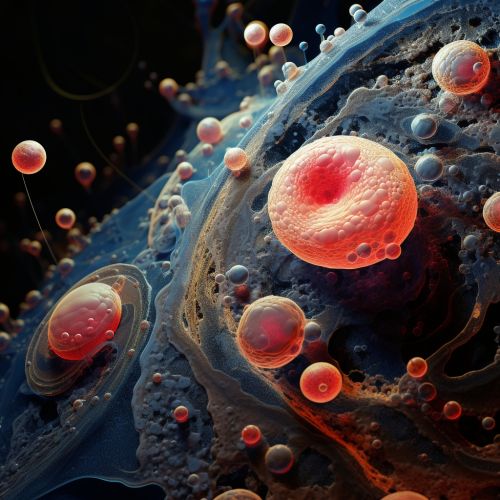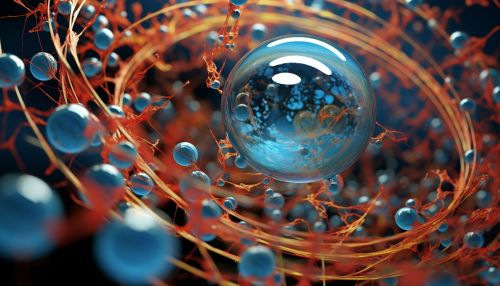Nucleic Acid Metabolism
Introduction
Nucleic acid metabolism refers to the processes by which nucleic acids, which include deoxyribonucleic acid and ribonucleic acid, are synthesized and degraded. These processes are vital to the functions of cells and organisms, as nucleic acids are the carriers of genetic information and play a central role in the production of proteins.


Nucleic Acid Structure
Nucleic acids are polymers composed of nucleotide monomers. Each nucleotide consists of a sugar, a phosphate group, and a nitrogenous base. In DNA, the sugar is deoxyribose, while in RNA, the sugar is ribose. The nitrogenous bases in DNA are adenine, guanine, cytosine, and thymine, while in RNA, uracil replaces thymine. The sequence of these bases in a nucleic acid polymer constitutes the genetic code.
Nucleotide Synthesis
Nucleotide synthesis is the process by which the building blocks of nucleic acids are produced. This occurs through two main pathways: de novo synthesis, where nucleotides are synthesized from simple precursors, and salvage pathways, where nucleotides are synthesized from free bases and nucleosides that are recycled from degraded nucleic acids.
De Novo Synthesis
De novo synthesis of purine nucleotides begins with the formation of a molecule called inosine monophosphate (IMP), which is then converted into either adenine or guanine nucleotides. Pyrimidine nucleotides, on the other hand, are synthesized from a molecule called uridine monophosphate (UMP), which can be converted into cytosine or thymine nucleotides in DNA, or uracil nucleotides in RNA.
Salvage Pathways
The salvage pathways for nucleotide synthesis involve the recycling of free bases and nucleosides that are released during the degradation of nucleic acids. These molecules are converted back into nucleotides by specific enzymes, thus saving the cell energy that would otherwise be used in de novo synthesis.
Nucleic Acid Synthesis
Nucleic acid synthesis involves the polymerization of nucleotides to form a nucleic acid chain. This process is catalyzed by enzymes called polymerases. In DNA synthesis, or replication, the enzyme DNA polymerase synthesizes a new strand of DNA using an existing DNA strand as a template. In RNA synthesis, or transcription, the enzyme RNA polymerase synthesizes an RNA strand using a DNA strand as a template.
Nucleic Acid Degradation
Nucleic acid degradation, or nucleic acid catabolism, is the process by which nucleic acids are broken down into their constituent nucleotides. This process is catalyzed by enzymes called nucleases, which cleave the phosphodiester bonds between the nucleotides in a nucleic acid chain. The free nucleotides can then be recycled through the salvage pathways or further degraded into their constituent parts.
Regulation of Nucleic Acid Metabolism
The metabolism of nucleic acids is tightly regulated to ensure that cells have an adequate supply of nucleotides for the synthesis of DNA and RNA. This regulation occurs at several levels, including the control of enzyme activity and the availability of precursors for nucleotide synthesis. Disruptions in the regulation of nucleic acid metabolism can lead to diseases such as cancer and genetic disorders.
Clinical Significance
Alterations in nucleic acid metabolism are associated with a number of diseases. For example, mutations in the genes encoding enzymes involved in nucleotide synthesis can lead to disorders such as Lesch-Nyhan syndrome, which is characterized by overproduction of uric acid. Similarly, defects in the enzymes involved in DNA repair can lead to diseases such as Xeroderma pigmentosum, which is characterized by increased sensitivity to ultraviolet light and a high risk of skin cancer.
